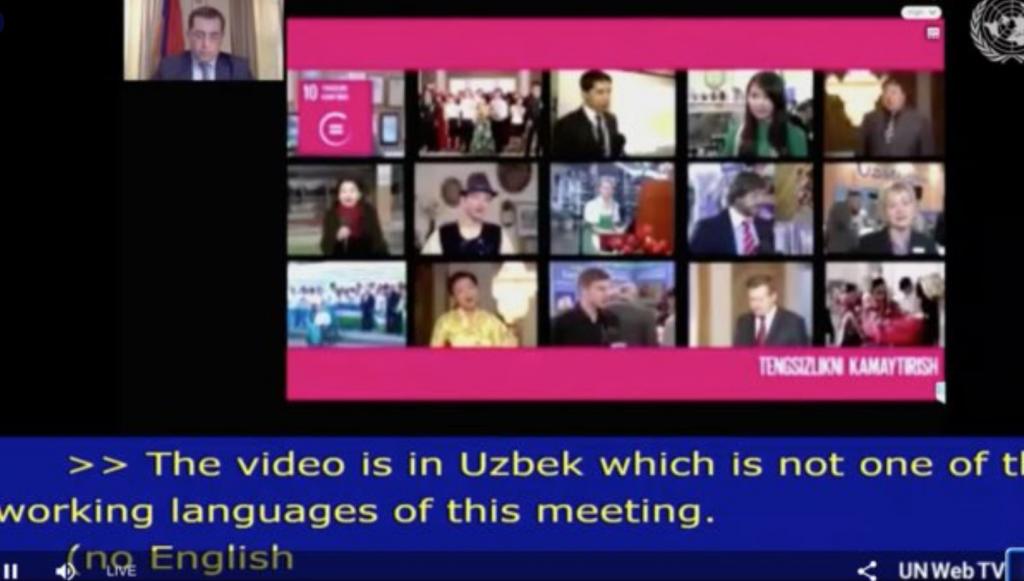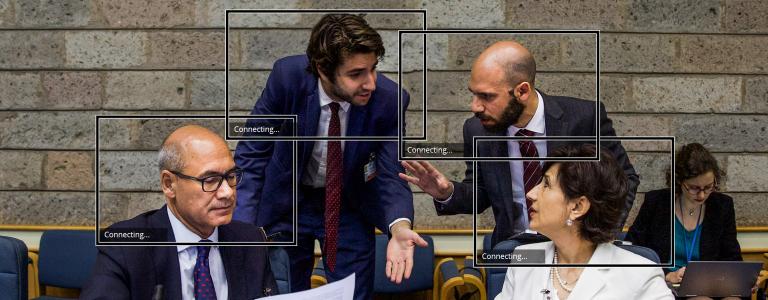How Multilateralism Handles a Pandemic
Without the in-person events that have traditionally driven global environmental decision making, it is much more difficult to follow what’s going on in multilateral environmental agreements. The few meetings that have taken place have been tailored to be “practical” for an online setting. When the juicy meetings with meaningful negotiations are online rather than in the corridors at key events, it is harder to keep track of them.
The challenge of keeping these processes transparent is greater than ever. As multiple environmental crises continue to unfold around us, IISD’s mission to provide the knowledge to act keeps us focused on how we can help identify solutions. Each month, we’ll curate information on key issues that affect global decision making related to these environmental crises.
This month we’ll start with the obvious—the impact of COVID on global environmental governance. We’re asking what we have learned from a summer of online global environmental governance.

The global pandemic means large groups cannot convene, particularly when they would bring together individuals from 195 different countries. A cautionary tale came the same week the global pandemic was declared, when an observer at the March meeting of the Green Climate Fund returned to Liberia with that country’s first case of COVID-19.
The multilateral system is based on communication, usually face-to-face. For 75 years, the UN has brought together diplomats (and many others) from around the world to find solutions to shared challenges. Can the summer of experimenting with online platforms provide clues on how to move ahead?
Lesson One: Small is beautiful
We’ve seen that scale matters. Smaller bodies, with fewer members and defined mandates, made the move online more smoothly. Several took key decisions for their regimes. The Chemical Review Committee (CRC) of the Rotterdam Convention on the Prior Informed Consent Procedure for Certain Hazardous Chemicals and Pesticides in International Trade finalized a recommendation to list perfluorooctanoic acids (PFOAs), a family of industrial chemicals used in products such as non-stick cookware, stain-resistant carpets, and fabrics. This decision provides greater certainty regarding which PFOA chemicals will be included in the Convention’s prior informed consent procedure.
Similarly, the constituted bodies of the UN Framework Convention on Climate Change (UNFCCC) met. The Adaptation Committee and the Local Communities and Indigenous Peoples’ Platform could continue to advance their mandated work plans in an online setting.
There is a second way that small is beautiful—the length of the agendas. So far, we’ve seen bureaus work to reduce the number of items up for discussion. One of the first in-person events to experiment with alternative communication methods was the 15th session of the UN Forum on Forests (UNFF). A resolution on a pared-down agenda covered six out of the 13 originally foreseen UNFF15 agenda items.
For the CRC, the Bureau agreed to defer consideration of eight newly notified substances to the next meeting in 2021. As the Earth Negotiations Bulletin (ENB) analysis of that meeting notes, the one issue that did move forward was the one issue for which previous, in-person discussions had taken place. A key challenge in the coming year will be learning how to move from placing a new issue on the agenda to building consensus on the solution, all through virtual dialogue. As we all look for the answer to this “holy grail” of challenges, our other observations offer some direction.
Lesson Two: Manage expectations
Several events sought to provide updates on work to date rather than to advance negotiations. The June Momentum for Climate Change featured updates from the various constituted bodies on how their work is progressing. The Chairs held some informal consultations by invitation only. It may have taken place when the subsidiary bodies were to meet, but this event was intended to measure the state of affairs rather than move discussions forward.

The Basel OEWG similarly reframed its meeting as a stocktaking exercise. There is very little multilateral action on plastic pollution, and most of it resides under the Basel Convention. The event was an opportunity to maintain focus on this issue, particularly as plastics use rises during the pandemic.
We’ve also seen multilateral environmental agreements using online processes to ensure necessary operational decisions are adopted. Parties need to make decisions on work programs and budgets to maintain Secretariat mandates and keep the lights on. The silence procedure has been incorporated into some decision making, with parties first taking part in an online discussion to gain a shared understanding of the issues and decision-making parameters, followed by several rounds of written comments and digital circulation of revised draft outcomes. In the final round, parties agree that the draft will be considered adopted if no objections are raised within a specified number of days.
Lesson Three: Check who's online
Time zones, limited ability to provide interpretation, and Internet connectivity issues conspire against effective participation. All these meetings ask some participants to stay up very late or wake up very early. We have all experienced an event with mixed results for interpretation. Simultaneous interpretation into the five UN languages is difficult, although we see many online platforms innovating in this space.

As the ENB analysis of UNFF15 indicates, non-governmental organizations were not included in the virtual consultations. Questions also arose about equity among Member States, given “challenges with simultaneous interpretation, the inability to effectively ascertain legitimacy of representation, and audio/video quality compromised by Internet connectivity.”
Lesson Four: Leadership is possible in virtual space
The climate and biodiversity crises are high on the international agenda. It is imperative to keep attention on these issues, even with the unfolding health crisis and economic downturn. We’ve seen this is possible.
In September, the Convention on Biological Diversity Secretariat and UN Member States took advantage of a number of processes that were underway to try to recover momentum for the adoption of the post-2020 global biodiversity framework (GBF). The virtual launch of the Global Biodiversity Outlook in no way diminished its message: countries collectively failed to achieve the Aichi Targets. The Summit on Biodiversity focused the attention of Heads of State and Government on the need for “Urgent Action on Biodiversity for Sustainable Development.”
While speeches delivered at a summit are more amenable to a virtual platform, the Pledge for Nature illustrates that traditional coalition-building activities are alive and well during these unusual times. Some expected the declaration of this “high-ambition coalition” to be endorsed by approximately 40 states going into the event, but over 70 had signed on by the end of the day. These states pledged to set the bar high as the negotiations for the GBF continue.
Lesson Five: Necessity is the mother of invention
Secretariats are finding ways to keep the momentum moving on their respective issues. However, the focus thus far has (rightfully) been on low-hanging fruits and easier wins. As restrictions on travel and gatherings stretch on, the need for options to fill the place of conferences of parties (COPs) and to bring new issues to the global agenda will grow.
Iteration and learning will point the way forward. In June, the first virtual meeting of the Global Environment Facility Council convened for two half-day sessions. Planning for the December meeting is anticipating a much fuller schedule. In July, in addition to bringing a focus on the ways in which the Sustainable Development Goals provide a roadmap for addressing the COVID-19 pandemic, the High-Level Political Forum on Sustainable Development was viewed as a practice run for the UN’s 75th anniversary and the opening of the 75th session of the UN General Assembly in September.
We’re tracking the tentative, first attempts to keep the wheels of multilateral environmental policy-making moving. Whether they can scale up to meaningfully address outstanding issues in the GBF, finalize the marine biodiversity of areas beyond national jurisdiction (BBNJ) treaty, or negotiate rules for the “Article 6” climate markets, among others, will require further innovation by Secretariats and parties.
---
This blog post's content was original distributed through the ENB Linkages Update email - our quarterly analysis of trends and events in multilateral environmental agreement negotiations. To ensure you do not miss our team's insights, subscribe to receive Linkages Update in your inbox.
You might also be interested in
What to Expect at Plastics INC-4
What to expect in Ottawa as plastic pollution treaty talks get underway, explained by the team leader of the global neutral reporting service Earth Negotiations Bulletin.
UNFCCC Submissions Tracker
Tracking and sharing opportunities for stakeholders to give input to the UN climate change negotiations.
The State of Global Environmental Governance 2023
In global environmental talks in 2023, the focus across nearly all issue areas was funding implementation and reviewing performance.
On Behalf of My Delegation (Second Edition)
This backpacker’s guide to the world of climate change negotiations sums up key challenges faced by negotiators and ways to overcome these problems.
